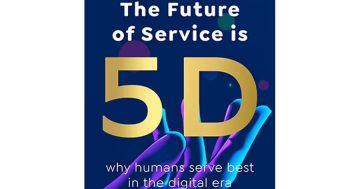John L. Smith* says HR executives told a recent conference that successful human resources still requires a human touch.
 Healthy work cultures are the products of design, not default — and it all starts with human resources.
Healthy work cultures are the products of design, not default — and it all starts with human resources.
That was the prevailing message among leading human resources executives during a recent Fortune Leaders Conference in Las Vegas.
Executives explored the challenges of spanning generations of employees and embracing technology without losing the human touch.
The executive roundtable of four dozen was tasked with addressing three challenges that are increasingly common to successful organisations: blending a multi-generational workforce, creating a culture that nurtures employees as it serves customers, and moving toward the next level of employee relations in what some are calling “Human Experience Management”.
Fortune Editor-in-Chief, Clifton Leaf, reduced their efforts to a working list of hypotheses:
- Values equal culture. Your values are your culture.
- Values not aligned with best practice will fail.
- The employee experience is the customer experience.
- The key to all of it is learning how to listen.
- Organisations need tools to do that.
- Encourage creativity to unleash the power of your organisation.
- Your mindset drives your skill set.
In a modern employment environment, which could include up to five generations working side by side, appreciating the strengths and weaknesses unique to each isn’t always easy.
For example, Baby Boomers may have gone grey and miss their record albums, but they bring irreplaceable professional experience that can prove invaluable in a working environment increasingly influenced by Millennials and younger employees accustomed to the latest technology.
Getting Boomers to communicate effectively, however, can be an HR headache.
Appreciating the fact that different generations communicate differently is a start.
Younger workers, for instance, tend to be more comfortable communicating through their technology.
Newer generations deserve more credit than they sometimes receive when it comes to understanding the workplace dynamic.
Thoughtful young employees appreciate the importance of experienced leadership — especially when it’s combined with a level of tech savvy.
And workers of any age appreciate an employer who takes an interest in their life goals.
Closing the gap between management and employee in a competitive environment was a common theme during the roundtable discussion.
One executive said she achieved multigenerational success by working to ensure that the traditional corporate bureaucracy and hierarchy weren’t allowed to stifle creative thinkers.
Different generations offer different skill sets that can complement each other — with the right leadership, of course.
Supporting an innovation subculture, she said, led to improved performance and workplace satisfaction.
One executive observed that Millennials and Gen Z often come to work with a higher set of expectations than some of their older counterparts.
They’re looking for mission-driven, inspirational leaders, the exec said.
In the end, they’re not so different in youthful passion and exuberance than the preceding generations.
Crafting a culture that serves and organisation’s employees is about creating human-centred organisations.
At their best, organisations are much like the communities they serve.
With benefits far beyond increased productivity and profit, remembering the human element is essential in best serving employees.
Serving employees best often means doing the proper due diligence on the front end to recruit talent whose own values reflect the organisation’s sensibilities.
Embracing the intrinsic importance of the employee in the corporate culture provides an ideal segue for the discussion of what’s next for HR executives as organisations continue to evolve.
They’re calling it Human Experience Management, and it seeks to establish a greater understanding of relationship between employee and employer.
What’s clear is the link between engaged employees and customer satisfaction, executives say.
Embracing technology without losing the human touch will remain a challenge, but executives gave a couple examples where it’s paying dividends in the workplace.
One executive said his organisation has begun using role-playing via computer-driven avatars to improve communication between older and younger employees with technology that can measure the effectiveness of the experience.
Another suggestion is a new-generation question-and-answer “chat box” format that has become popular with employees: 2.5 million questions answered in the past 18 months.
“It’s helped our team grow and learn,” the executive said.
* John L. Smith is a freelance journalist. He tweets at @jlnevadasmith.
This article first appeared at fortune.com











